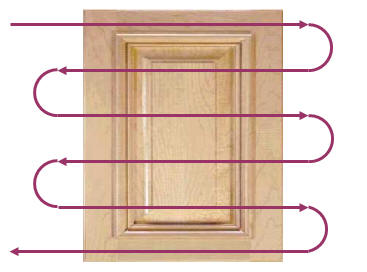- Incorrect application:
- When using a paint sprayer, many thin coats produce a far superior finish than one or two thick coats.
- The proper use of a paint sprayer requires that you over-paint the area to be covered and this is one of the key areas that an inexperienced spray painter encounters.
Using a paint sprayer requires some practice, in order to have the paint application smooth, without paint running and splatters. Using a paint sprayer, in a couple of instances is a 180 degrees from using a brush or roller.
We have been brain washed by paint manufactures, who sell most of their paint to people who want a quick job. Hence, paint is formulated to cover in one coat when using a brush or roller (at least this what the advertising tells us).
When using a paint sprayer, the paint is thinned and multiple thin coats, which take more time and patience to apply create a much better finish. If you try to cover the material in one coat, using a paint sprayer, the paint will run and you will get splatters.
When a paint sprayer is turned "ON" and the trigger is pulled, there will be a burst of paint, and in some cases an inconsistent amount of pressurized air versus paint. When the trigger is released, paint will continue to flow, even though it is milliseconds, as the pressure in the container holding the paint is reduced to zero, as shown in Figure 6.

Figure 6 - Incorrect method of using a paint sprayer
What this means is; you must pull the paint sprayer trigger to the "ON" position prior to being over the piece of material to be painted and release it to the "OFF" position, after you have passed over the far edge of the material to be painted, as shown in Figure 7. The common error is to hold the paint sprayer over the material, pull the trigger to the "ON" position which allows a burst of paint to land on the material to be painted and then release the trigger while the paint sprayer is still positioned over the material.

Figure 7 - Correct method of using a paint sprayer
As previously mentioned the key to a good finish with a paint sprayer takes some practice. It requires a smooth, not jerky application of the product.
When applying the paint, you should start at the top and continue spraying in a continuous smooth motion until you reach the bottom, as shown in Figure 8. The best results are obtained when the piece of material is lying flat rather than standing up.

Figure 8 - Directional application of paint - using a paint sprayer
Note: Using the paint sprayer in a dust free environment goes a long way in producing a high quality finished product.
Note: It is always wise to use the proper protective and safety products when using any paint sprayers. These include; eye protection, dust masks, and where appropriate work gloves, ear protection and respirators
